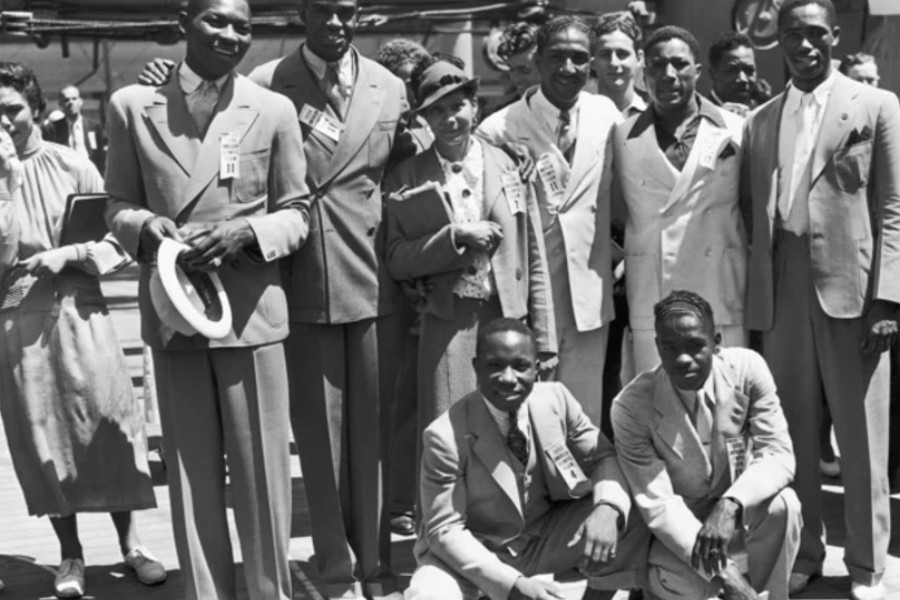 Harlem has always been a combination of high and low, from the 1920’s to the 1930’s Mae West made a name for herself on the Vaudeville circuit with plays as a connoisseur of Harlem culture.
Harlem has always been a combination of high and low, from the 1920’s to the 1930’s Mae West made a name for herself on the Vaudeville circuit with plays as a connoisseur of Harlem culture.
On the high end, during this same time the Swing Streets of Harlem where The Nest in Harlem was arguably one of New York City’s greatest unsung cultural landmarks was where [easyazon_link identifier=”B019OI2HJ0″ locale=”US” tag=”harlemworld-20″]Mae West[/easyazon_link] hung out during the height of Prohibition. Harlem Bespoke talks about “the blocks between Lenox and 7th Avenue at the time had the most dense concentration of speakeasies in the entire uptown village. Unlike many of the bigger established clubs (i.e [easyazon_link identifier=”B00950XM1U” locale=”US” tag=”harlemworld-20″]Cotton Club[/easyazon_link]), these businesses were owned by African-Americans serving an integrated clientele. It’s said Mae West dated one of the owners at The Nest, Tillie’s Chicken Shack founded its first outpost, and Glady’s Clam Bar was owned by lesbian proprietor Gladys Bentley.” The Fitchburg Sentinel reported that during her time in Harlem she looked for talent in Harlem like Cab Galloway’s band.
On the low side Mae West’s play like [easyazon_link identifier=”B00SZXHOIU” locale=”US” tag=”harlemworld-20″]The Constant Sinner[/easyazon_link], from her novel, about the bars and brothels in mid-September 1931 in Harlem. In her book, West stepped onstage as the slinky temptress “Babe Gordon”. The plays Broadway premiere at [easyazon_link identifier=”B00UNO9O8M” locale=”US” tag=”harlemworld-20″]Royale Theatre[/easyazon_link]’s production would open one month later in November. It was set in Harlem during the Prohibition Era, the play followed the escapades of a honey-haired prizefighter groupie.
Like the Harlem Shack, on 5th Avenue and 140th Street, in 1927, this was one of the places she wrote about she called “creep joints”.
In the article Harlem Knocks she describes these places and the people who:
… worked the streets till they made enough for a few drinks and then they parked around the Fifth Avenue creep joints, waiting for downtown explorers that needed a “steer” to dope or wanted to be led to a “circus” where women resorted to strange practices to gratify morbid curiosity…
From her play titled The Constant Sinner in 1931.
Here is video of her singing My Old Flame by Duke Ellington and his band in 1934:
Mae West Duke Ellington-1934 by redhotjazz
In [easyazon_link identifier=”0520210948″ locale=”US” tag=”harlemworld-20″]When I’m Bad, I’m Better: Mae West, Sex and American Entertainment[/easyazon_link]by author Marybeth Hamilton. She said that Mae West made her career on her reputation as (Harlem) New York’s
Photo credit: Mae West pictured in a Zelda Wynn Valdes dress from the 1930’s. Ms. Valdes was the designer to the stars, she designed this dress for Mae West, Joyce “The Black Marilyn Monroe” Bryant, the Dance Theater of Harlem, the Playboy Bunny costumes for Hugh Hefner and dresses for Ella Fitzgerald when she was going to sing at the Apollo Theater.
Related articles
- 4 Must-See Botanical Gardens in America (lakeside.com)
- Donut Day! (lakeside.com)
- Groundhog Day: 8 Facts About Our Favorite Groundhog (lakeside.com)
Become a Harlem Insider!
By submitting this form, you are consenting to receive marketing emails from: . You can revoke your consent to receive emails at any time by using the SafeUnsubscribe® link, found at the bottom of every email. Emails are serviced by Constant Contact








